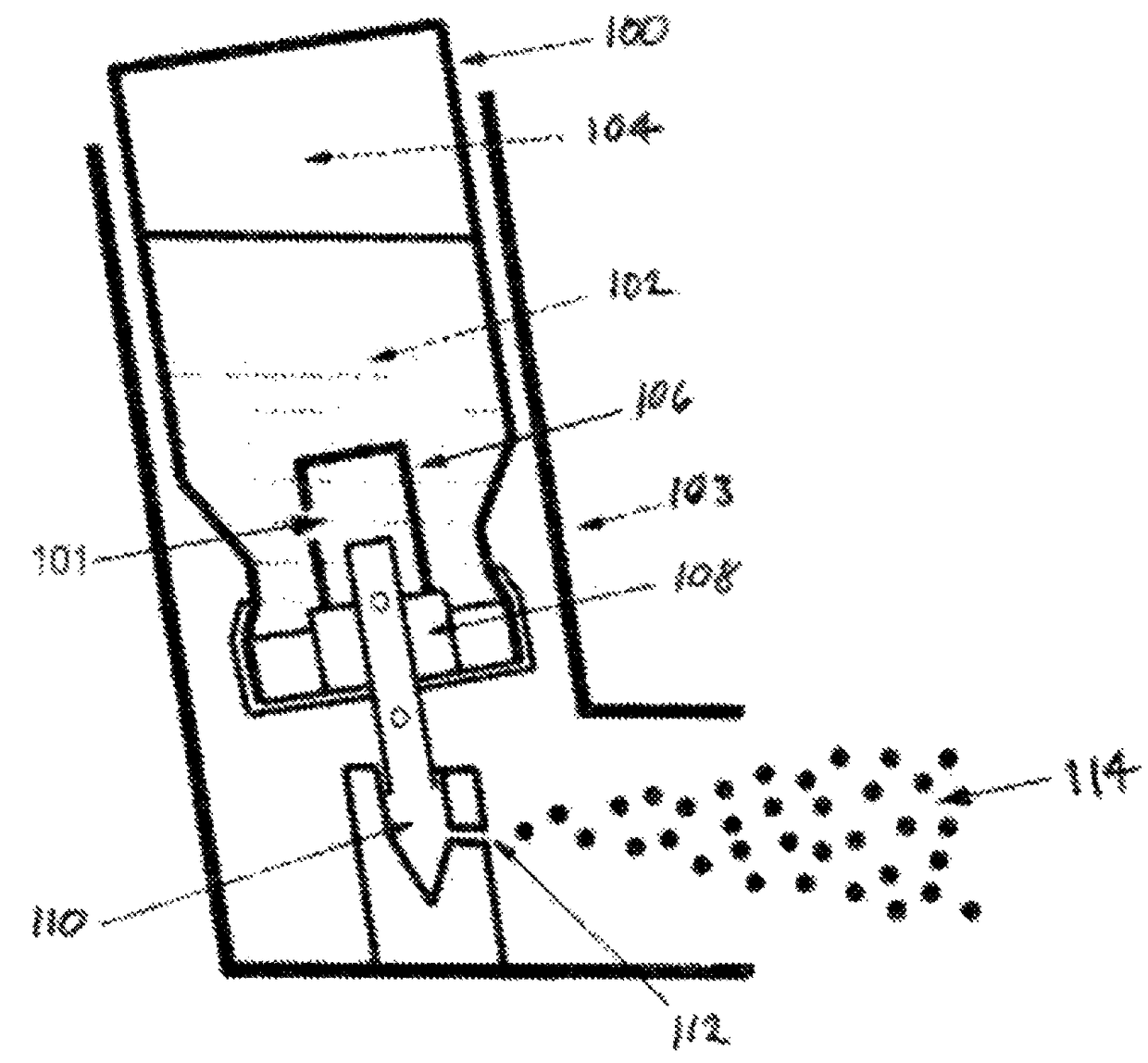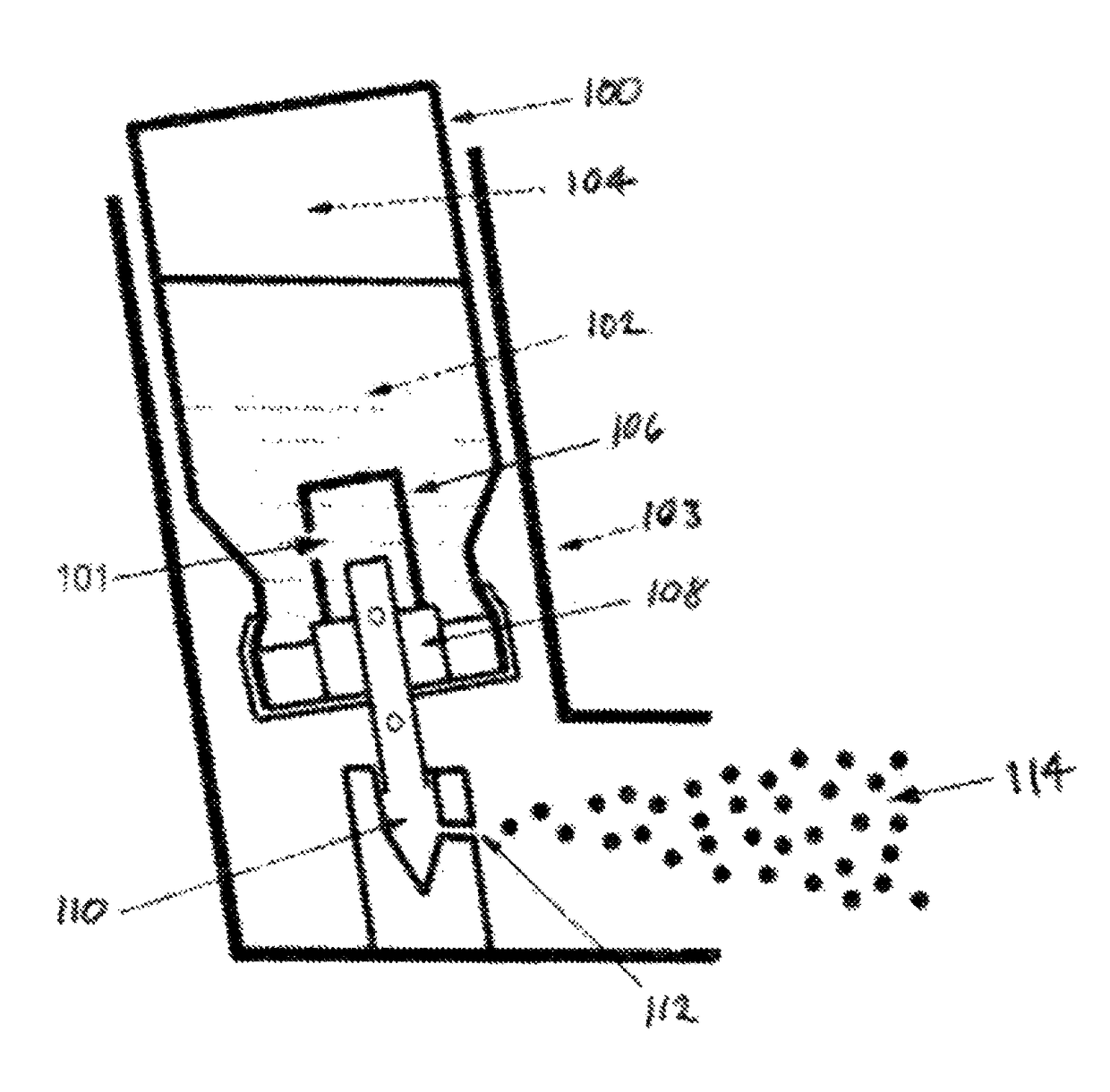Low-temperature inhalation administration of cannabinoid entities
- Summary
- Abstract
- Description
- Claims
- Application Information
AI Technical Summary
Benefits of technology
Problems solved by technology
Method used
Image
Examples
example 1
[0041]A formulation is prepared as set forth below.
[0042]
CBD (98% pure powder)- 97 mg =1.55%Ethanol-- 200 mg =3.19%HFA 134a5970 mg =95.23%SubTotal6267 mg =99.97Impurities in CBD 2 mg =0.03%Total6269 mg =100.00%
[0043]The formulation is prepared as follows;
[0044]98% CBD powder (99 mg) is weighed out and transferred to a suitable container and ethanol (0.2 g) added till solution is observed. The solution is transferred to an appropriate aerosol container (glass, aluminum) and a metered dose inhaler valve (100 ul) crimped on. The sample is then pressure filled with 5.97 g HFA 134a. The final product is a yellow solution. This formulation will deliver about 2.0 mg of CBD per actuation.
example 2
[0045]Following the procedure in example 1 except that the particular components and amounts are selected as shown in the table below, formulations of the present invention are prepared:
[0046]
CannabinoidCosolventPropellant(98% CBD)(ethanol)% w / w of (HFA134a)% w / w of Examplegg / 100 ulgformulationgformulation2a0.05040.640.22.19.3797.402b0.02650.370.3664.138.4895.582c0.0980.0990.4104.29.2594.80
example 3
[0047]Following the procedure in example 1 except that the particular components and amounts are selected as shown in the table below and the starting material is a 24% CBD enriched cannabinoid extract, a formulation of the present invention is prepared:
[0048]
CannabinoidCosolventPropellant(98% CBD)mg / (ethanol)% w / w of (HFA134a)% w / w of Exampleoil in g100 ulgformulationgformulation10.51172.01.1815.634.882.74
[0049]The formulation is prepared as follows;
[0050]Cannabinoid extract oil enriched in 24% CBD (0.5117 g of oil) is weighed out and transferred to a suitable container and ethanol (1.18 g) added. The resulting solution contained some insoluble particles which were remove by filtration. It was determined that during filtration, 23% of the weight was lost. The filtered solution is transferred to an appropriate aerosol container (glass, aluminum) and a metered dose inhaler valve (100 ul) crimped on. The sample is then pressure filled with 4.81 g HFA 134a. The final product is a yello...
PUM
| Property | Measurement | Unit |
|---|---|---|
| Temperature | aaaaa | aaaaa |
| Fraction | aaaaa | aaaaa |
| Fraction | aaaaa | aaaaa |
Abstract
Description
Claims
Application Information
 Login to View More
Login to View More - R&D
- Intellectual Property
- Life Sciences
- Materials
- Tech Scout
- Unparalleled Data Quality
- Higher Quality Content
- 60% Fewer Hallucinations
Browse by: Latest US Patents, China's latest patents, Technical Efficacy Thesaurus, Application Domain, Technology Topic, Popular Technical Reports.
© 2025 PatSnap. All rights reserved.Legal|Privacy policy|Modern Slavery Act Transparency Statement|Sitemap|About US| Contact US: help@patsnap.com



